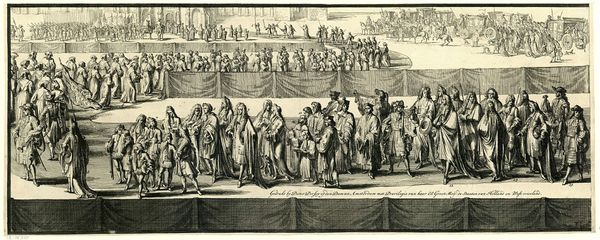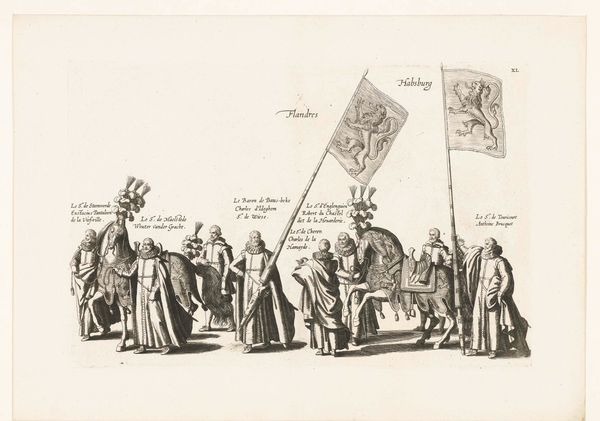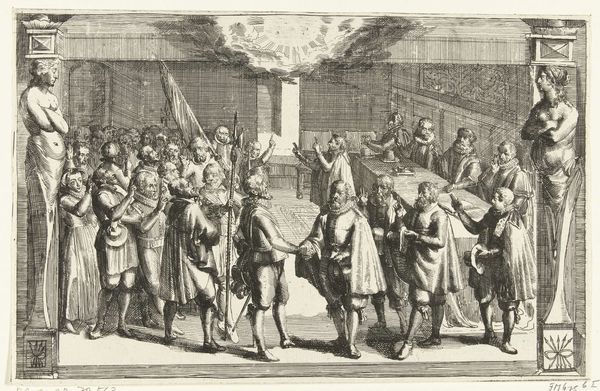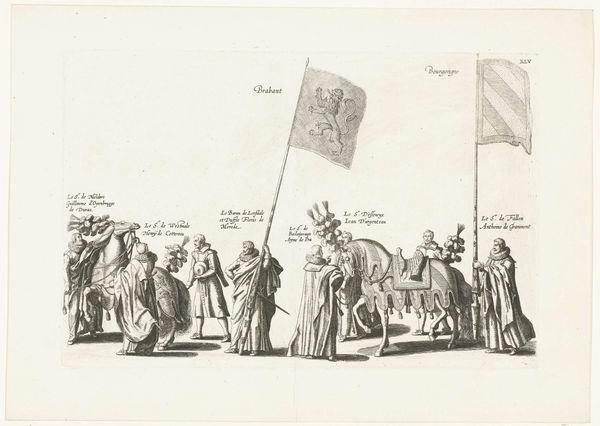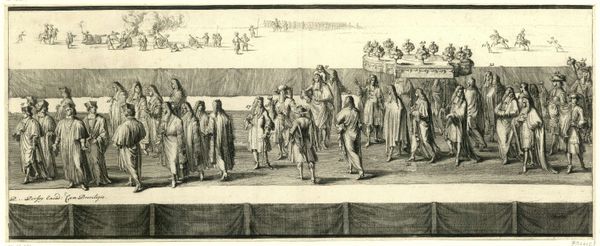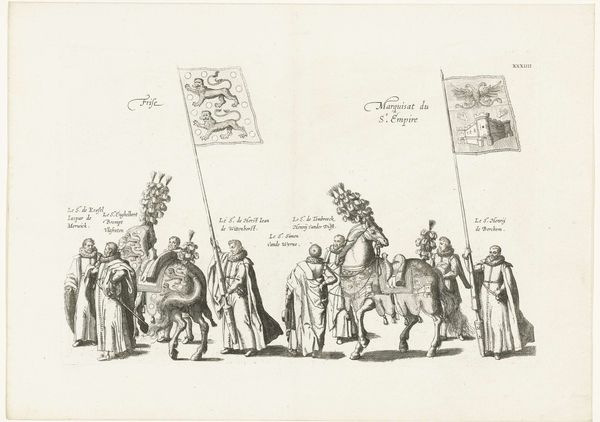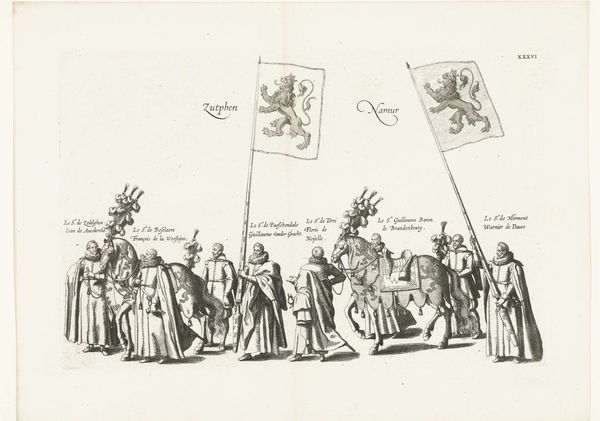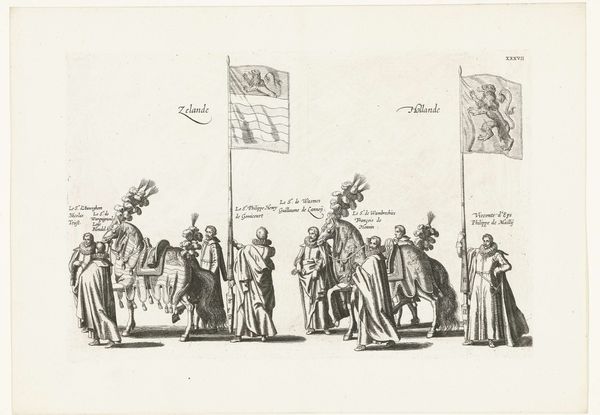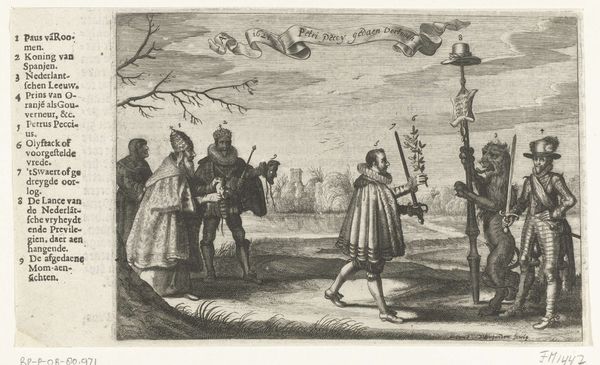
De lijkstatie van de koningin, tweede deel, tweede helft, 1695 1695
0:00
0:00
romeyndehooghe
Rijksmuseum
#
landscape illustration sketch
#
pen drawing
#
mechanical pen drawing
#
pen illustration
#
pen sketch
#
personal sketchbook
#
ink drawing experimentation
#
pen-ink sketch
#
pen work
#
pencil art
Dimensions: height 235 mm, width 585 mm
Copyright: Rijks Museum: Open Domain
Editor: So, this is "De lijkstatie van de koningin, tweede deel, tweede helft, 1695," a pen drawing by Romeyn de Hooghe, currently held in the Rijksmuseum. It's quite detailed; I'm struck by how it documents what appears to be a procession. What do you see in this piece, in terms of its cultural context? Curator: I see a very deliberate piece of political imagery, deeply embedded in the power structures of the late 17th century. This wasn't just about memorializing a queen. Think about who commissioned it, where it was displayed. How does it solidify the monarchy’s narrative for the public? Editor: That’s a great point. I hadn't considered the commissioning aspect. It definitely portrays a very organized and impressive display of royal power. Almost like propaganda? Curator: Precisely! The procession itself, carefully orchestrated and meticulously rendered, acts as a powerful form of visual propaganda. Consider the historical context: The Dutch Republic, constantly vying for international prestige. A lavish funeral reinforces national pride and displays power, both internally and to rival nations. What do you think about the choice of printmaking as the medium? Editor: Printmaking makes it widely accessible. More people get to see it, spreading the message further. It's not just an image for the elite. Curator: Exactly. It takes the spectacle of the funeral, traditionally a very exclusive event, and reproduces it for broader consumption. In doing so, the monarchy controls the narrative, shaping public perception. Editor: So, it’s less about mourning and more about solidifying power? I mean, both, probably? Curator: The two are intertwined. Public mourning *becomes* a tool for legitimizing power. Looking at the work, what symbols jump out at you, reinforcing that legitimacy? Editor: The flags, the armour, the sheer number of figures... it all conveys authority. I hadn't thought about it as being explicitly designed to communicate those things so deliberately. It makes me consider the role of art in politics in a completely different light. Curator: And that's the beauty of it. This image reminds us that art doesn't exist in a vacuum. It is always in conversation with the society that produces and consumes it. Editor: I'll definitely look at art with more of a historical and political lens now. Thanks for sharing your insight!
Comments
No comments
Be the first to comment and join the conversation on the ultimate creative platform.
